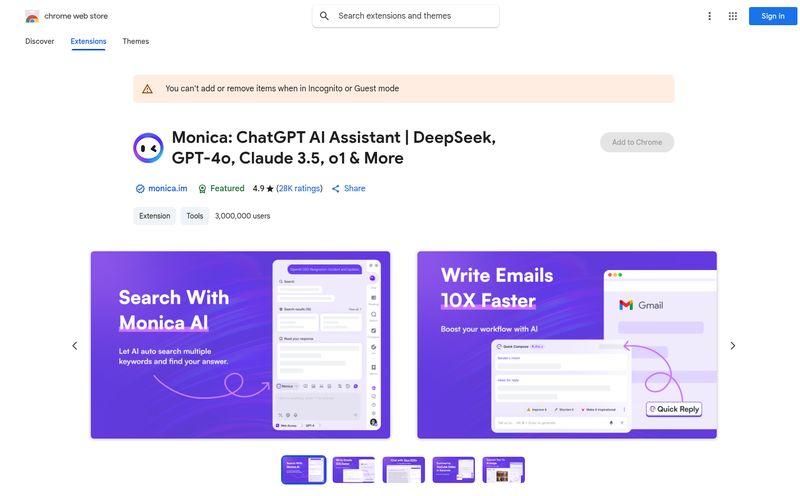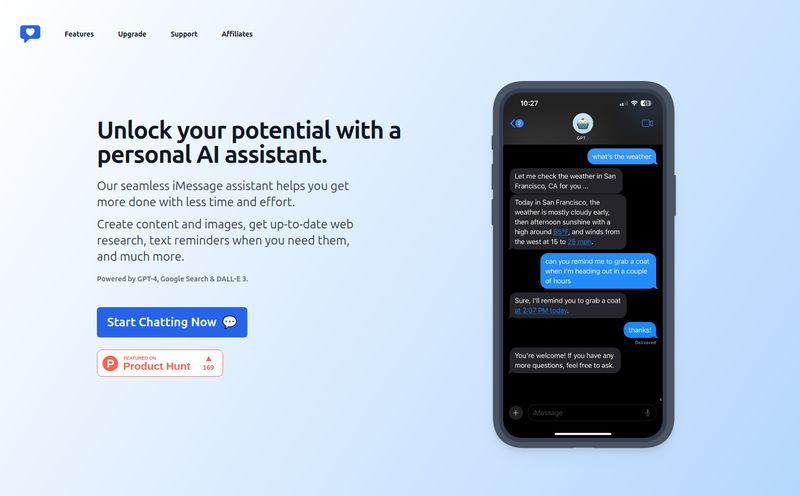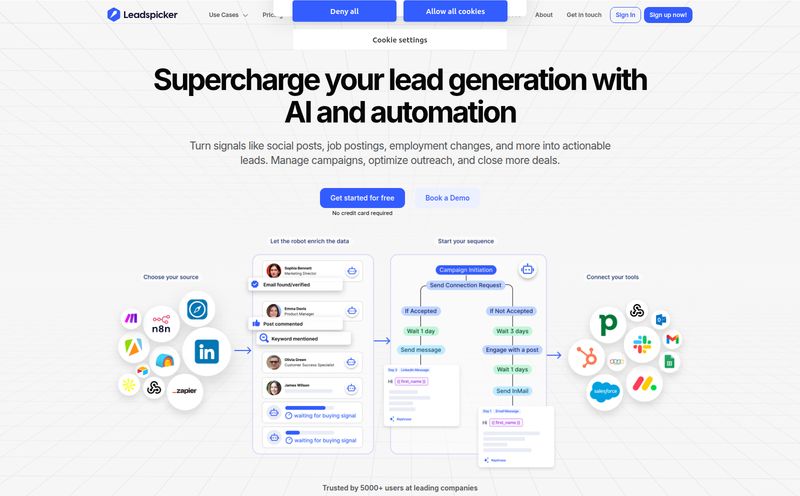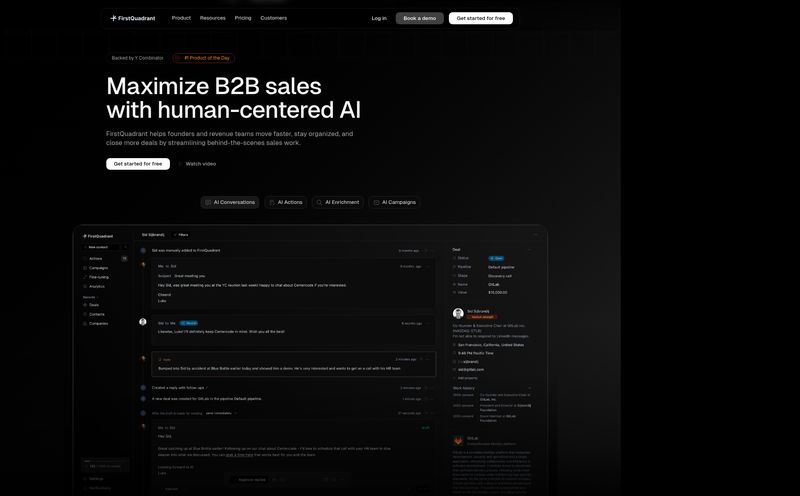Okay, let’s have a little heart-to-heart. If you're a creator, you know the struggle. Your digital toolbox is probably overflowing. You’ve got a Linktree for your social bio, Gumroad for that eBook you wrote, maybe you’re dipping your toes into Kajabi for a mini-course, and you’re paying for an email service provider to keep in touch with your audience. It's a Frankenstein's monster of subscriptions, logins, and zaps that barely hold everything together. I’ve been there. My credit card statement used to look like a who’s who of SaaS companies.
Every so often, a tool comes along that promises to be the holy grail. The one platform to end the chaos. That's the big promise of Pillar. It struts onto the scene, not just as another link-in-bio page, but as an all-in-one monetization platform designed to replace… well, pretty much everything. But does it actually work, or is it another case of a tool trying to be a jack of all trades and master of none? I decided to take a look.
What Exactly is Pillar? (More Than Just a Link-in-Bio)
First thing’s first: calling Pillar a “link-in-bio tool” is like calling a smartphone a pocket calculator. Sure, it does that, but you’re missing the entire point. At its core, Pillar is an ecosystem for creators to sell their stuff directly from one central hub.
Think of it this way. Your standard Linktree is like a digital business card. It has a list of links and looks neat. Pillar is the entire office building behind that card. It's the storefront where you sell products, the classroom where you teach courses, the marketing department that sends out emails, and even the boardroom where you manage brand deals. It’s built on the idea that your “link in bio” shouldn’t just be a list of destinations; it should be the destination.
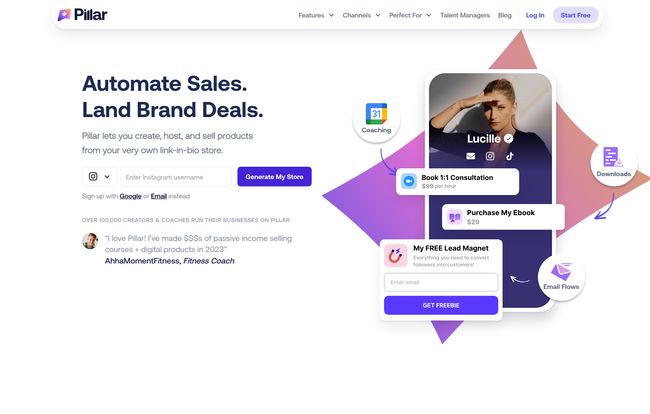
Visit Pillar
The platform explicitly aims to consolidate the services of LinkTree, Gumroad, Kajabi, and even ClickFunnels. A bold claim, for sure. It lets you build a customized page where your followers can buy digital downloads, sign up for memberships, book coaching calls, and enroll in your courses, all with a slick checkout process that includes things like Apple Pay. That last part is a bigger deal than you might think; reducing friction at checkout is how you turn browsers into buyers.
The Massive Feature Set: A Quick Tour
When I first saw Pillar's feature list, my first thought was, “Whoa.” It’s a lot. And honestly, this can be both a blessing and a curse. For some, it's the dream toolkit. For others, it might feel like buying a 100-piece socket set when you just need a single screwdriver. Let’s break it down into more digestible chunks.
Core Monetization Tools
This is the heart of Pillar. The platform gives you a Creator Store to sell pretty much any digital product you can dream up. We're talking eBooks, presets, templates, audio files, you name it. You can also create and sell full-blown courses with its Course Creator, or set up recurring revenue with Sell Memberships. It’s a powerful combination that covers one-off sales and long-term community building. It handles the product hosting and the payment processing, which is a huge load off any creator's mind.
Audience Growth and Engagement
Selling is only half the battle, right? You need to build and nurture an audience. Pillar seems to get this. It includes tools for creating Lead Magnets (like free guides to capture emails) and has a built-in Email Marketing system. This is huge. Not having to integrate a separate service like Mailchimp or ConvertKit is a major selling point. They also have features for building Communities, which suggests a move towards creating private, paid groups, similar to what you might find on Circle or a private Facebook Group.
The Professional Creator Toolkit
This is where Pillar starts to flex for more established creators. The Appointments feature is a godsend for coaches, consultants, or anyone selling their time. It integrates with Google Calendar and Zoom, automating the booking process. Then you have the Brand Deals manager and the ability to create a professional Media Kit. This shows Pillar isn’t just for selling products to your audience; it's also for helping you land deals with brands, which is a critical income stream for many influencers.
And Then There's AI...
Of course, there’s AI. It's 2024, after all. Pillar comes with an AI Assistant, an eBook Generator, and even an Infographic AI. I’m always a bit skeptical of these add-ons. Sometimes they’re genuinely useful for whipping up a quick product description or social post. Other times, they feel like a gimmick. The jury is still out for me on how deeply integrated and helpful these are, but their inclusion shows Pillar is trying to stay on teh cutting edge.
My Experience: The Good, The Bad, and The... Bloated?
So, after playing around with the platform, what’s the real story? Here's my take, free of marketing jargon.
What I Genuinely Liked About Pillar
The all-in-one promise is, for the most part, delivered. The sheer convenience of having my digital downloads, booking calendar and email list in one dashboard is a massive relief. The user interface is clean and uses a drag-and-drop system that feels intuitive. You don’t need to be a tech wizard to build a decent-looking page and get a product listed for sale. I set up a test digital download in about 15 minutes, and it was surprisingly straightforward.
"The idea of canceling three or four different monthly subscriptions and just paying for one platform is… incredibly tempting. It declutters your workflow and your finances."
The integrated payment options are also a win. The easier it is for someone to pay you, the more likely they are to do it. Simple as that.
A Few Things to Keep in Mind
Now, it's not all sunshine and rainbows. Some people might argue that a tool that does everything can’t do any one thing perfectly. And there's some truth to that. If you're a power-user of a dedicated platform like Kajabi, you might find Pillar's course creator a bit less robust. It's a trade-off between specialized depth and integrated breadth.
There's also the potential for feature bloat. If you only want to sell one eBook and have a link list, do you really need a brand deal manager and an infographic AI? Probably not. You might feel like you're paying for a bunch of features you'll never use.
Finally, you are building your business on their platform. This is the classic SaaS dilemma. It's convenient, but you are reliant on Pillar's servers, their features, and their continued existence. It's a risk we take with almost any online tool, but it's worth acknowledging. You trade some control for a lot of convenience.
Pillar vs. The World (Linktree, Gumroad, Kajabi)
How does it stack up against the big names it's trying to dethrone?
- Pillar vs. Linktree: This isn't a fair fight. Linktree is a simple list of links. Pillar is a full-blown sales and marketing platform. If you just need links, stick with the simple option. If you want to sell from your bio, Pillar is in a different league.
- Pillar vs. Gumroad: Gumroad is fantastic for its simplicity in selling digital products. It’s elegant and focused. Pillar does what Gumroad does but adds on course creation, memberships, email marketing, and more. It's less of a simple storefront and more of a complete commercial hub.
- Pillar vs. Kajabi: Kajabi is the undisputed heavyweight champion for serious course creators, with incredibly deep features for funnels, and student management. Pillar is more like a versatile middleweight boxer; it might not have the same knockout power in the course-creation ring, but it can also handle digital downloads, appointments, and brand deals with an agility Kajabi lacks.
Let's Talk Money: The Pillar Pricing Puzzle
Here's where things get a bit mysterious. At the time of writing this article, Pillar’s homepage invites you to “Start Free” but doesn’t lay out clear pricing tiers. This is a common strategy for SaaS companies. They want you to get into the ecosystem with a free, perhaps limited, plan. Then, they'll offer paid tiers that unlock more features, allow more subscribers, or offer lower transaction fees.
I would expect a structure that includes a free plan with higher transaction fees and then a couple of monthly subscription tiers (say, in the $20-$100/mo range) that reduce those fees and add premium features. But to know for sure, you’ll have to go through their sign-up process. A bit of a pain, but pretty standard for the industry.
Who is Pillar ACTUALLY For?
After all this, I think I have a good idea of the ideal Pillar user. This platform is perfect for:
- The Multi-Hyphenate Creator: The coach-who-is-also-an-author-who-also-has-a-podcast. If you're juggling multiple types of monetization, Pillar could be your new best friend.
- The Ambitious Beginner: If you're just starting to monetize beyond ads and want a platform that can grow with you from selling your first eBook to launching your first big course.
- The Simplicity Seeker: The creator who is tired of the digital duct tape holding their business together and just wants one login and one monthly bill.
It's probably not for the specialist who has built their entire business on a dedicated, high-end platform and uses every single advanced feature it offers. It's also likely overkill for someone who just needs a simple, free page of links.
Frequently Asked Questions about Pillar
- Can Pillar completely replace my website?
- For many creators focused on a personal brand and direct sales, yes. It can act as your main sales hub. However, if you have a content-heavy blog with years of archives, you’ll probably want to keep that separate and use Pillar as the commercial arm of your brand.
- Is Pillar easy for beginners to use?
- The basic link-in-bio and digital product setup are very beginner-friendly. Tapping into the more advanced features like funnels or email sequences will have a slight learning curve, but it seems less intimidating than many of its competitors.
- Do I own my content and customer list on Pillar?
- Yes, you always own your content and your customer data. The key is that you're using their platform to host it. You should be able to export your email list and customer information if you ever decide to leave.
- What are the transaction fees on Pillar?
- While not explicitly listed upfront, expect standard payment processor fees (usually around 2.9% + 30¢ from Stripe/PayPal) plus a potential platform fee from Pillar, especially on the free plan. Paid plans typically reduce or eliminate the platform's cut.
- How does the AI Assistant really help?
- Based on its name and industry trends, the AI likely helps you brainstorm ideas, write compelling copy for your product descriptions, generate email subject lines, or even outline content for your digital products, saving you time on the creative process.
So, is Pillar the revolution it claims to be? I think it represents a significant shift in the creator economy towards consolidation and simplicity. The era of needing a dozen different tools is hopefully coming to an end. Pillar is an ambitious, powerful platform that makes a very compelling case for being the central nervous system of a creator's business.
It’s not perfect for everyone. The specialist may want more depth, and the minimalist may find it overwhelming. But for that growing middle class of creators who are tired of juggling platforms and just want to create and sell, Pillar is a very, very interesting solution. It might just be the sanity-saver we've all been looking for.
